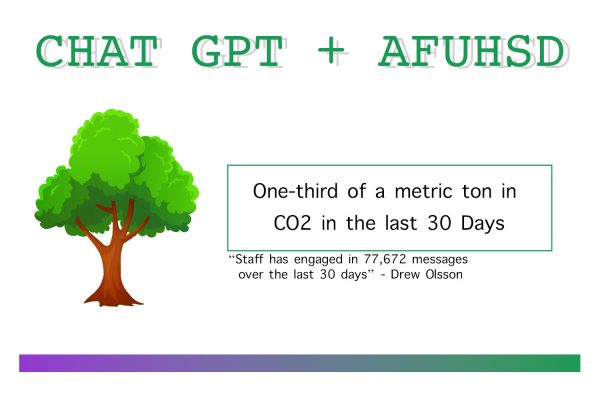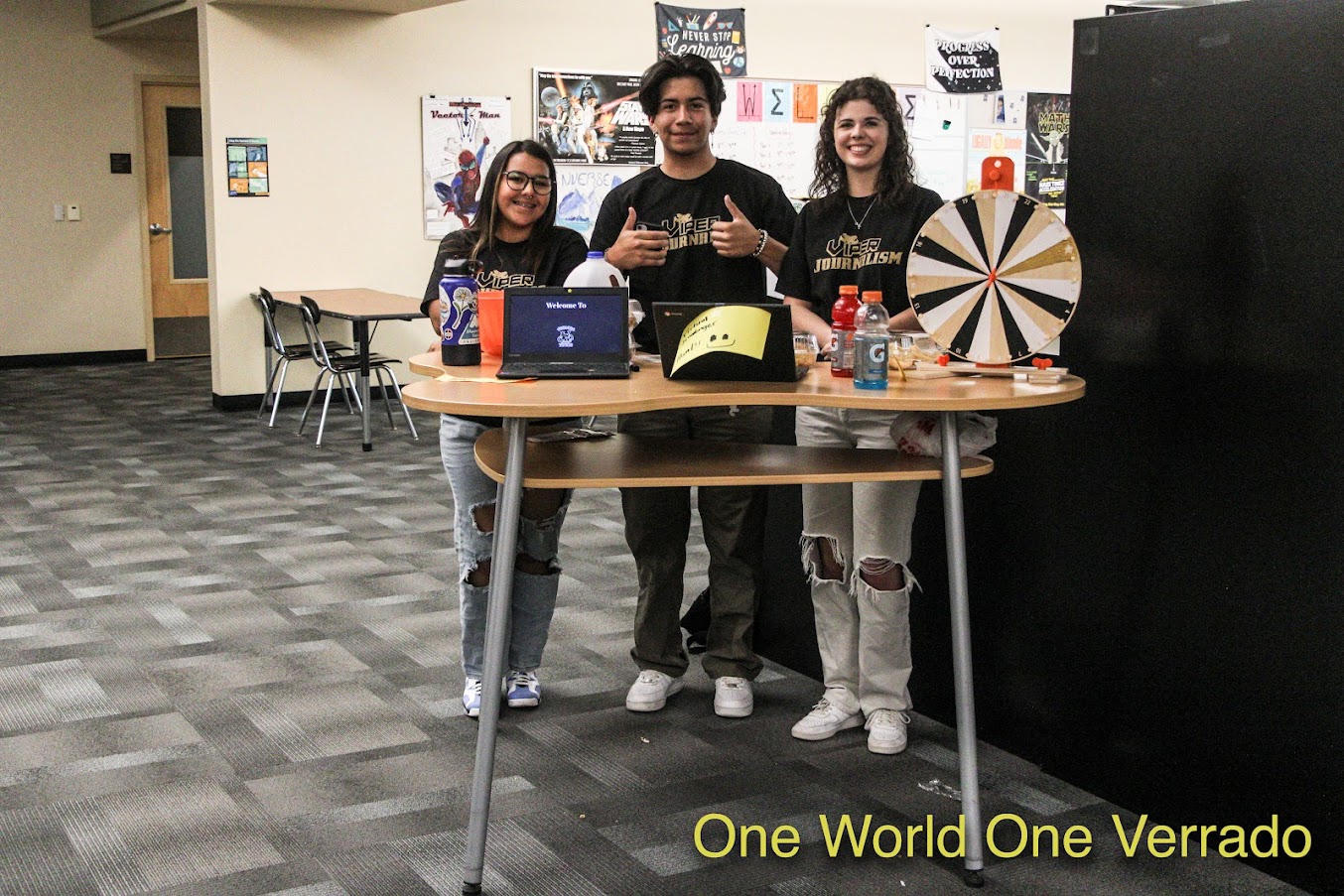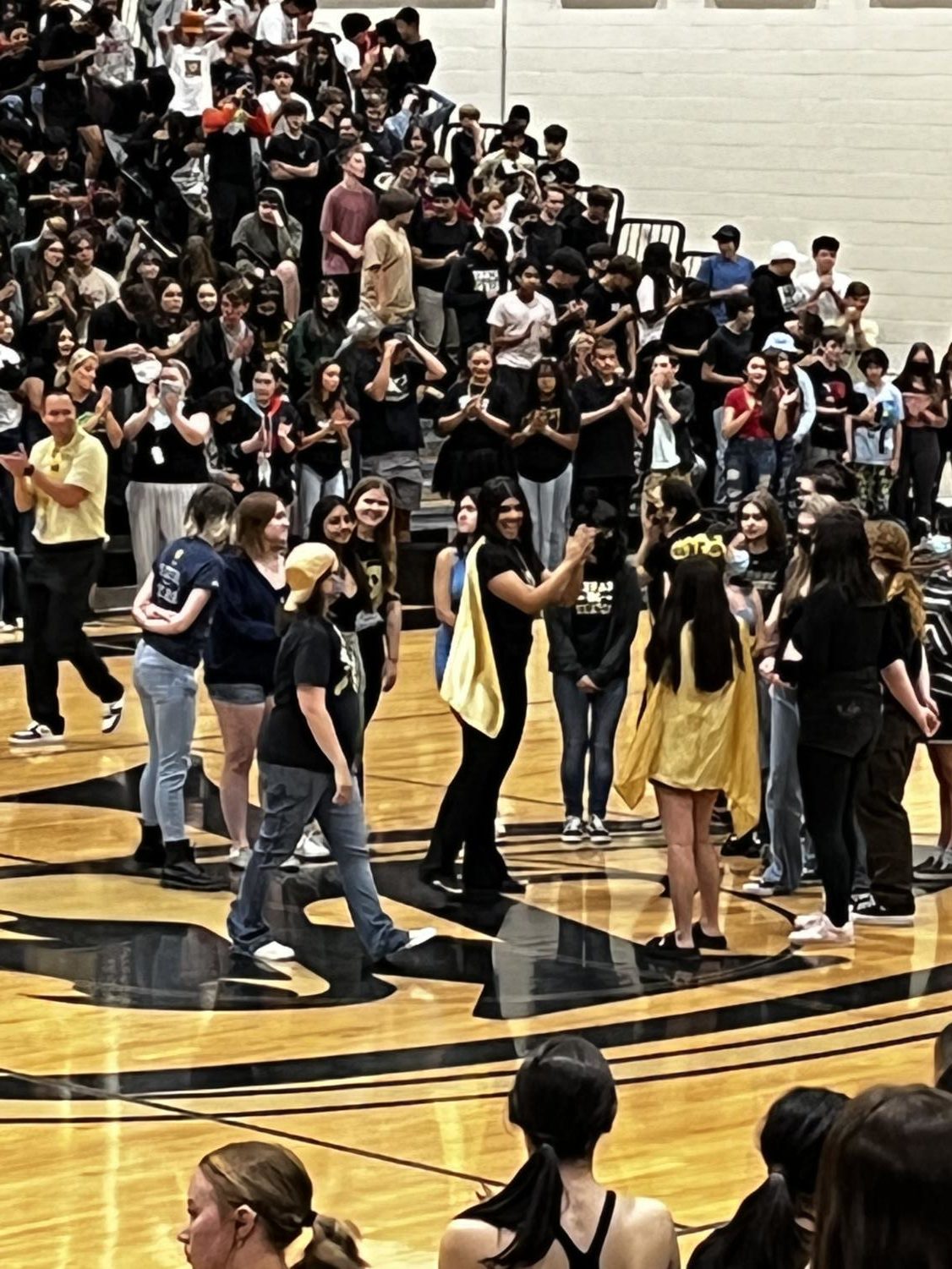Agua Fria Union High School District has made history as the first in the U.S. to officially contract ChatGPT, marking a bold step into AI-assisted education. However, as schools embrace artificial intelligence, concerns grow over its environmental impact—namely the massive energy consumption of AI servers—and its potential drawbacks in the classroom. (Lead written by ChatGPT)
Is AI faster? Definitely. Would Sheldon Cooper have loved it? Quite possibly because it can relieve a brilliant scientist from more mundane tasks. The time can be devoted to exploring the universe, solving mysteries, and creating amazing new things.
But AI doesn’t come without controversy.
The Environmental Effects
A common phrase is that a single inquiry produces 4.32 grams of carbon dioxide (CO2) for ChatGPT. Though this is an informal estimate, their arrival is fairly clear. However, their figure could be out of date.
The model is based on the amount of GPUs they had in 2023, which was thirty-thousand. However, that was when they were processing more than ten million queries a day. Now, ChatGPT has more than one billion inquiries a day, which only leads to the assumption that they have to scale their operations accordingly.
If ChatGPT is running off of the same amount of processors as 2023 while still being able to process more than a billion inquiries per day, their CO2 output would be a lot less than predicted. There’s a double-edged-ness to this figure contingent on up-to-date information that hasn’t been publicly released.

Unfortunately, there is no information disclosing ChatGPT’s processor amount more recently, so it’s unknown if the model still holds as true as it did.
If the estimation is accurate, by asking ChatGPT 4 questions, you’ve produced more carbon dioxide than it takes to boil water with an electric kettle.
“Staff has engaged in 77,672 messages over the last 30 days.” Drew Olsson, Agua Fria Union High School District’s Technology Integration Coordinator and the coordinator with the contract with ChatGPT Said.
Considering the number of messages the school has sent out in the past 30 days since 25 January 2025, 4.32gCO2 per question for 77,672 is roughly 335,543 grams of CO2, roughly one-third of a metric ton – 373 pounds of coal per month.
“…if you average that out over the last 6 months, ~466,032 messages since the beginning of the school year,” Olsson added.
That’s roughly 2,013,258 grams of CO2 – more than two metric tons. In other words, roughly 2,236 of coal since the start of this academic year.
If we were to assume that 77,672 queries to ChatGPT were the average per 30 days, by the time we graduate – May 8th – that’d be roughly 258,906 messages.
Using the model from earlier, that could be roughly 1118.474 kilograms of CO2, or around 1.118 metric tons as of receiving this information (28 January 2025).
In total, that’s over three metric tons of CO2 produced by our ChatGPT usage alone. Essentially, 2 tons of CO2 are already estimated to have been emitted, and one more by the end of the academic year.
The Cognitive Effects
“ChatGPT allows staff to create custom bots tailored to their needs, which makes using AI much more useful than using a free model,” Olsson said.
ChatGPT’s application for teacher assistance is innumerable. The less time a teacher has to spend garnering information for lectures, the more time is opened up for other teacher requirements, such as being with students, as a change of time spent.
An inverse relationship can be claimed from this too. Just because ChatGPT eliminates the need to spend time creating models, finding information, etc. does not mean that it intrinsically boosts teacher-student time or relationships. It creates convenience, and as much as convenience boosts productivity, it may equally disrupt it with laziness.
“…This is all not only for them to save time, but to get them to understand AI so that they can best lead their students in understanding the capabilities and limitations of using AI in their classes. If a student doesn’t learn this in school, they may never, and that would set them back in terms of their college and career readiness,” Olsson added.
Micheal Gerlich, the Center for Strategic Corporate Foresight and Sustainability at SBS Swiss Business School in Kloten-Zurich, Switzerland, disagrees with Olsson in this regard. Gerlich would say as a part of a study that “The findings [would reveal] a significant negative correlation between frequent AI tool usage and critical thinking abilities, mediated by increased cognitive offloading.”
In essence, Gerlich’s study suggests that people who put the bulk or all cognitive efforts onto AI and not themselves cause their brains to not be challenged, which in turn causes cognitive function regarding critical thinking to be weakened. Delegating laborious tasks to AI is convenient and time-effective, but given the study, it could diminish one’s ability to think critically if not regulated, whether it be systematic or self-governed. In an environment built around strengthening the mind, like school, the implications of this study can be unsettling and raise further questions regarding its implementation.
Contrasting Olsson’s claim that a student needs to know to be aware of the capabilities and limitations of using AI for academic and career readiness, Gerlich’s study shows a cognitive decline as a result of dividing the workload with generative AI like ChatGPT demonstrates the need for further definition and possibly regulation in regards to generative AI in classrooms.
On one hand, ‘capabilities and limitations of using AI’ could mean understanding the capabilities and limitations of AI’s power, and thus be able to efficiently use ChatGPT, which would be to answer questions given to it, and by proxy could compromise one’s ability to critically think as proven by Gerlich. On the other hand, it could also mean personally limiting the capabilities of AI, which could healthily implement AI as personally limiting it to ensure that you don’t sacrifice your critical thinking could feed back into AI being a fantastic timesaver.
Matthew Donze, Verrado High School Computer Science and Honors Algebra I teacher, would say “I don’t think of the use of AI as cheating more as a tool to complete a task,” he’d continue, “[in regards to coding,] programming is done by giving step by step directions to a computer to accomplish a task or solve a problem (this is called an algorithm)… I think of AI as another even higher level programming language where you can tell it to write a whole program to solve whatever task you are trying to accomplish which is then translated into Python or whatever language you ask the AI to generate.” To write the code, Donze argues that it’s perfectly fine for AI to do it for you. In fact, he argues that it’s simply another programming language to learn.
Donze would also add that “The use of Computer Science skills and knowledge comes into explaining and refining to the AI what exactly you need done, fixing errors, and dealing with edge cases,” an edge case is a problem or situation that is outside of normal procedures and the boundary of your own operating ability. Donze would continue “I do expect my students to be able to explain whatever code the AI generates for them because they will need to understand what the AI is doing to use it effectively and be successful developers.”
For the latter claim of what ‘capabilities and limitations of using AI’ could mean, Donze’s usage and policy regarding it would fit right in. In Computer Science, AI is treated as a tool – another programming language – by a means to write code. However, students must know the code itself. Donze balances out those who cheat using AI by making them elaborate and refine the AI’s coding. Thus, a student must actually learn what the AI is writing so that way they can still be proficient in the language and use to be a successful developer.
The direction Agua Fria UHSD takes will ultimately depend on their regulation policies regarding their contract with ChatGPT.
What Are Other Districts Doing Regarding AI?
Among all school districts within the Phoenix Metropolitan Area – that being Phoenix Union High School District (UHSD), Buckeye UHSD, Tempe UHSD, Agua Fria UHSD, Glendale UHSD, Deer Valley Unified School District (USD), Chandler USD, Scottsdale USD, and Paradise Valley USD – only half of them have established AI policies that are easily accessible by the internet. As previously discussed, one of which, Agua Fria Union High School District, has an open contract with ChatGPT.
Those who do have policies that are easily accessible are: Tempe UHSD, Agua Fria USD, Deer Valley USD, and Scottsdale USD. Those who don’t are: Phoenix Union UHSD, Buckeye UHSD, Glendale UHSD, Deer Valley USD, and Scottsdale USD.
Though all these school districts occupy the same metropolitan area, their ways regarding ChatGPT within their policies seem more or less divided, with a new subsect emerging within those with AI policies – those who are actively contracting companies such as OpenAI.
Though Agua Fria is currently the only one with an active contract with ChatGPT, Tempe USD is, too, planning on implementing a similar contract in the academic year of 2025. It should be noted, however, that Tempe USD is openly more cautious about integrating AI in school. This is seen through District Chief Academic Officer Dr. Maja Aleksic directly discussing AI’s aptness to compromise critical thinking, along with other sociological issues.
As research behind generative AI continues, balancing both its disadvantages and advantages will introduce a fine line that district board members may have to balance and regulate accordingly.





Jocelyn Hellums • Aug 15, 2025 at 10:24 AM
I like the way this article goes into detail about both the positives and negatives of AI.